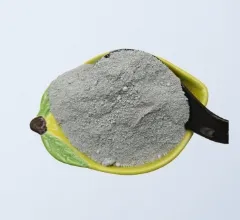
Silica Fume: High-Performance Additive for Concrete Strength and Durability
In high-performance concrete and advanced construction materials, кремний is one of the most effective additives available. Known for its ultra-fine particle size and pozzolanic properties, silica fume is used to boost compressive strength, improve durability, and enhance chemical resistance — making it a favorite in tunnels, bridges, high-rises, and industrial flooring.

Whether you’re sourcing bulk material for a ready-mix plant or browsing silica fume for sale for a specific job, understanding its benefits, uses, and current silica fume price is essential to making a smart, cost-effective purchase.
What Is Silica Fume?
Silica fume (also called microsilica) is a by-product of producing silicon metal or ferrosilicon alloys in electric arc furnaces. During the process, silicon oxide gas is produced and then condensed into an ultra-fine powder. This material is collected through a filtering system, resulting in amorphous silica with very high surface area and reactivity.
Key characteristics:
>90% SiO₂ content
Particle size: 100x smaller than cement (average ~0.1 μm)
Highly pozzolanic (reacts with calcium hydroxide in cement)
Dark gray in color
Specific surface area: 15,000–30,000 m²/kg
Silica fume is typically added to concrete at 5–10% of the cement weight to significantly improve performance.
Benefits of Using Silica Fume in Concrete
Higher Compressive Strength
Increases strength up to 25–50% by filling voids and forming more calcium silicate hydrate (C-S-H).
Reduced Permeability
Minimizes water and chloride penetration — ideal for marine or bridge structures.
Improved Durability
Resists sulfate attack, alkali-silica reaction (ASR), and abrasion in harsh environments.
Better Bonding and Finish
Provides a denser matrix, resulting in smoother surfaces and improved bonding with rebar.
Environmental Advantage
Utilizes an industrial by-product, reducing waste and supporting greener construction practices.
Applications of Silica Fume
Silica fume is widely used in:
High-performance concrete (HPC)
Shotcrete for tunnels and underground structures
Precast and prestressed concrete elements
Bridge decks, parking garages, and marine structures
Industrial floors and warehouse slabs
Oil and gas well cementing
Its fine particle size allows it to improve not just strength but also durability, finish, and resistance to chemical attack — essential in critical infrastructure projects.
Forms and Packaging
Silica fume is available in:
Undensified form (~200–300 kg/m³ bulk density)
Densified form (~500–700 kg/m³ bulk density)
Slurry form (dispersion in water, easier to mix)
Packaging options include:
10–25 kg bags
500–1000 kg jumbo bags
Bulk silo delivery for large-scale projects
Most buyers choose densified silica fume for easier handling and transport.
Silica Fume Price Overview
The silica fume price depends on grade, form (densified or undensified), packaging, and quantity.
|
Form/Type |
Price Range (USD/ton) |
|
Densified Silica Fume |
$250 – $400/ton |
|
Undensified Silica Fume |
$300 – $500/ton |
|
Slurry Form |
$350 – $550/ton |
|
Small Bags (retail) |
$0.50 – $1.00/kg |
Factors affecting silica fume price:
SiO₂ purity and particle size
Shipping distance and customs duties
Packaging (bulk vs bagged)
Certification (ASTM C1240, EN 13263, etc.)
Supplier origin (China, India, Europe, USA)
For large buyers like ready-mix companies or precast factories, bulk orders and direct deals with manufacturers can lead to significant discounts.
How to Source Silica Fume for Sale
You can find silica fume for sale through:
Chemical Distributors
Stock domestic or imported silica fume
Quick delivery, smaller quantities available
Direct from Manufacturers
Best pricing for bulk and long-term supply
Brands in China, India, Norway, and UAE dominate the global supply
Construction Materials Suppliers
Local stocking for small batches
Can also include mix design consulting and support
Always request:
COA (Certificate of Analysis)
MSDS (Material Safety Data Sheet)
Packing specs and delivery terms
Silica Fume Storage and Handling
Store in a dry, ventilated area — moisture affects reactivity
Use dust collectors or protective equipment during mixing
Ensure proper blending with cement to avoid clumping
For slurry form: mix before use and avoid long storage without stirring
Silica Fume FAQs
Q1: What is the recommended dosage of silica fume in concrete?
A: Typically 5–10% of the cement weight. Higher percentages may require water reducers or superplasticizers.
Q2: Is silica fume the same as fly ash?
A: No. Both are pozzolans, but silica fume is much finer and more reactive, providing higher strength and lower permeability.
Q3: Does silica fume affect workability?
A: Yes. It reduces slump, so a superplasticizer is usually needed to maintain workability.
Q4: Is silica fume hazardous?
A: It is not classified as hazardous but does produce fine dust. Use proper PPE during handling.
Q5: Can I buy silica fume in small quantities?
A: Yes. Many suppliers offer 10–25 kg bags or samples for lab use or small projects.
Whether you're building a high-rise, casting precast elements, or lining a tunnel, кремний offers real performance benefits that go far beyond traditional concrete mixes. From strength to durability to finish quality, it's an upgrade worth the investment.
Looking for silica fume for sale? Welcome to connect with us.
Бүлешү
-
Silica Fume: High-Performance Additive for Concrete Strength and DurabilityЯңалыкларJul.21,2025
-
Iron Powder: Industrial-Grade Versatility in Powdered FormЯңалыкларJul.21,2025
-
Iron Ore: Essential Raw Material Driving Global Steel ProductionЯңалыкларJul.21,2025
-
Glass Marbles: From Classic Toys to Custom CollectiblesЯңалыкларJul.21,2025
-
Glass Beads: Bulk Supply, Custom Designs, and Factory Direct SourcingЯңалыкларJul.21,2025
-
Chemical Products for Sale: Sourcing Safely from Trusted Chemical FactoriesЯңалыкларJul.21,2025






